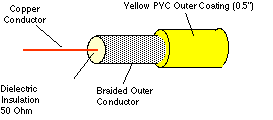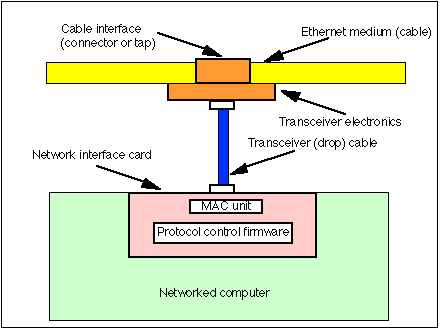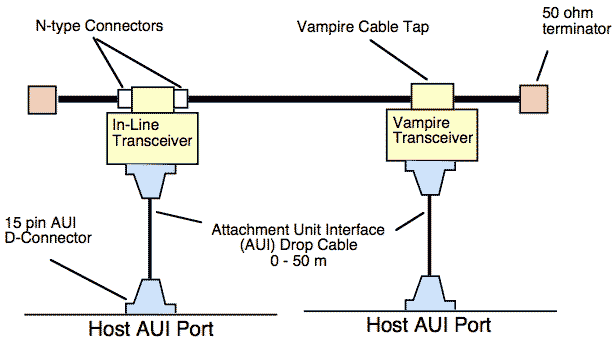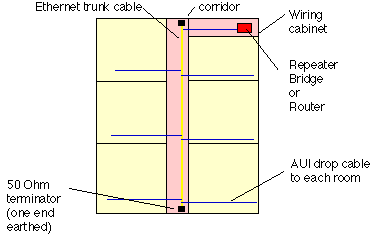
The first form of cabling supported by IEEE 802.3 Ethernet was low-loss 50 Ohm coaxial cable. This is shown in the figure below. The diameter of this type of cable is 0.5 inches in diameter (and it was often supplied with a distinctive yellow outer PVC coating). Because of the solid central conductor and rules that limited the radius to which a cable can be bent, the cable itself is rather inflexible. It has become known in the communications industry as "Thick Ethernet". The official name for this cable is 10 Baseband5 (10B5), indicating that it is specified for baseband communications (i.e. not modulated) at 10 Mbps over distances where the total cable segment can be up to 500m.

10B5 Cable or "Thick Ethernet"
The 10B5 cabling system forms a shared bus. Upto 100 transceivers may be connected computers to the bus. (Multiple cable segments can be connected using bridges or repeaters). An AUI drop cable is then run from the transeiver attached to the cable to a Host AUI port on the network interface card of each computer to be connected.
The key advantages of 10B5 is the extended transmission distance and the fact that it has very good noise immunity. 10B5 cabling was traditionaly used for backbone connections and it is now fairly uncommon to find this type of cabling using to connect a user workstation.


Since this type of cabling is relatively difficult to install, the cable is normally installed in a communications duct or along a corridor in an office building (see below).

A typical example of the use of 10B5 cabling in an office environment.
A summary of the properties of this type of cabling is given below:
Gorry Fairhurst - Date: 15/1/2020